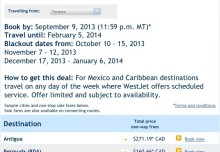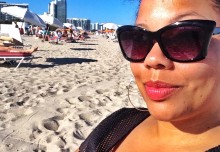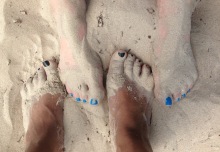This ugly and annoying phenomenon has broken records this year and has become one of the great environmental concerns of the coastal areas of the Caribbean region

GLADYS SERRANO
More than six centuries ago, the first European expeditions that crossed the Atlantic to reach the American continent sighted a phenomenon known as sargassum. While documenting it, some of those explorers feared that their ships would get stuck in that brown tide. Now, in the last decade, sargassum has been invading the Caribbean coasts, destroying its ecosystem and becoming a threat to the tourism sector.
It all began in the summer of 2011, when sargassum started to accumulate on the beaches of many destinations with crystal clear waters and white sands. Mexico was one of the first countries to report it, but this environmental problem, which is lethal to many species and also harmful to human health, concerns almost the entire Caribbean region. This year, the amount of sargassum has already reached historic figures in the Atlantic Ocean: in June, more than 24 million tons of the “brown tide” were recorded in the Caribbean coast, from Puerto Rico to Barbados, according to a report from the oceanography laboratory of the University of South Florida.
What is sargassum?
The term refers to an uncontrolled growth of the species Sargassum fluitans and S. natans, brownish seaweed that live in suspension in the seas and move along the Atlantic, dragged by ocean currents. Although most seaweed live in the depths, with their roots attached to the bottom of the sea, these two species can live at the surface because they have gas vesicles, an adaptative mechanism that improves photosynthesis and allows them to spend their lives floating, explains Rosa Rodríguez, a marine biologist at the Institute of Marine Sciences and Limnology of the National Autonomous University of Mexico (UNAM).
While the uncontrolled accumulation of these algae is toxic in coastal regions, causing the massive death of many marine species, in the open sea they play a very important role in maintaining ecological balance. The Sargasso Sea, in the North Atlantic Ocean, is an exceptional ecosystem that provides food and shelter for hundreds of species, some of them unique to this floating habitat. In addition to serving as a platform for the protection and sustenance of marine fauna, it is part of the migration path of species such as eels, turtles and whales.
Why did it become a problem?
When the unrestrained blankets of sargassum reach the coast, they prevent light from filtering to the seabed, which is essential for the biology of corals and types of algae that produce food through photosynthesis. This, in turn, affects the biodiversity of the system they support.

EDGARD GARRIDO (REUTERS)
One characteristic of sargassum is how quickly it can grow: in favorable conditions, it is able to double its biomass in less than 20 days. When the seaweed decompose on the shore, they consume large amounts of oxygen, causing anoxia and emitting toxic gases like hydrogen sulfide and methane, which are very dangerous for humans and can cause the mass death of many species.
The excess of nitrogen and phosphorus derived from the putrefaction process serves as fertilizer for them to grow more, generating leachates, sulfidic acid and arsenic, which are responsible for the fetid and rotten smell that has now become common in some Caribbean tourist destinations. Yet another problem, says the UNAM specialist, is the poor disposal of sargassum, which ends up becoming a pollutant.
Why is it produced, and where does it come from?
According to the strongest hypotheses, climate change is behind the spread and uncontrolled growth of sargassum. For years, various scientific studies have warned of how changes in the ocean currents due to the melting of the poles and glaciers, as well as the excessive ocean fertilization, are making this an increasingly common phenomenon.
The discharges and waste from industries and agriculture at the mouths of the great rivers of South America, such as the Amazon and the Orinoco, whose sediments and organic matter are pushed north by the currents, have caused seaweed to reproduce at a record speed, creating the Great Atlantic Sargassum Belt, a buildup of seaweed that is devastating the Caribbean coasts. “It is a clear example of how climate change affects us directly and indirectly,” points out the biologist.
Which regions are being affected?
Far from being an isolated phenomenon, the problem is impacting a large part of the Caribbean. The beaches of Belize, Honduras, Jamaica, Cuba, Mexico, the Dominican Republic and Barbados, or islands such as San Andres, Guadeloupe or Martinique, among others, are affected by the blankets of seaweed every year. “But large arrivals of sargassum have also reached the north coast of Brazil and even Florida,” says Rodríguez. This brown tide is not only impacting the Caribbean. The biologist explains, “it arrived in the Gulf of Mexico long before, but not in such high volumes.”

JONATHAN ALPEYRIE (BLOOMBERG)
The first report of the appearance of sargassum came from local fishermen and a newspaper in 2011, according to Chuanmin Hu, an oceanographer with the University of South Florida team, which began tracking its growth in the Gulf of Mexico in 2006.
Is sargassum here to stay?
Hu is the author of a study that in 2019 warned that a change in the ocean currents was increasing the possibility that recurrent sargassum blooms in the tropical Atlantic and the Caribbean Sea would become the new norm. According to Hu, the data suggests that the amount of sargassum that reaches the coasts is growing steadily. According to Rodríguez, even though there is not enough information on the biomass that is reaching the different regions of the Caribbean, which fluctuates every year, “everything suggests that not only the problem will remain, but it will take a turn for the worse.”
Can it be controlled?
Since the problem was pointed out by environmentalists and hotel owners, governments have sought ways to clean their affected beaches in order to recover tourism. Nonetheless, Rodríguez explains that the resources invested so far have not been efficient. “Only a small area of the coast is being looked after, and ecosystems that are also affected by sargassum, like the mangroves and the jungle, are not being cared for,” she points out.
What’s more, the strategy of directly removing the buildup of seaweed from the coasts has a very negative impact. “A little sargassum helps prevent beach erosion, but when it’s a lot it has the opposite effect. And with the heavy machinery that is used to extract the seaweed, they remove a lot of sand,” says the UNAM expert. Another problem that stems from the removal of sargassum is how poorly they dispose of it. “Sargassum has a lot of arsenic, but also cadmium, lead and other heavy metals, as well as dangerous bacteria that pollute the environment,” she warns.
What to do with sargassum?
The arrival of sargassum in the Caribbean can be an opportunity for various industries, and in recent years different initiatives have promoted its use as a raw material.
The different properties of sargassum can be used by sectors ranging from construction to pharmaceuticals or the energy industry. Research centers and universities, for example, are using it as a source of biofuel, thanks to its composition of lignin, cellulose and hemicellulose; sodium alginate, a polysaccharide that can also be found in sargassum and that acts as a thickener, is used in the textile industry and for haute cuisine.
With the aim of promoting the principles of the circular economy, which uses everything while creating added value, some companies are taking advantage of the impurities left over from the alginate extraction process, such as fucoidans. These biopolymers, whose antitumor and immunomodulatory properties are currently being researched, could even be used as cancer therapies, according to some studies.
Source/Fuente: El Pais 18 august 2022
NO ONE CAN PREDICT SARGASSUM AMOUNTS AND LOCATION, WITH CLIMATE CHANGE. IF YOU ARE LOOKING FOR A CLEAR BEACH, NOTHING IS GUARANTEED UNLESS YOU CAN FIND A VACATION ON A BEACH THAT IS PROTECTED BY CURRENTS AND OTHER ISLANDS “BLOCKING” THE AMOUNT THAT IS REACHED OR DEPOSITED.
Visit SargassumMonitoring.com to see what your beach looks like. It is a helpful tool but doesn’t take into account the daily/weekly clean-up that your resort participates in.




